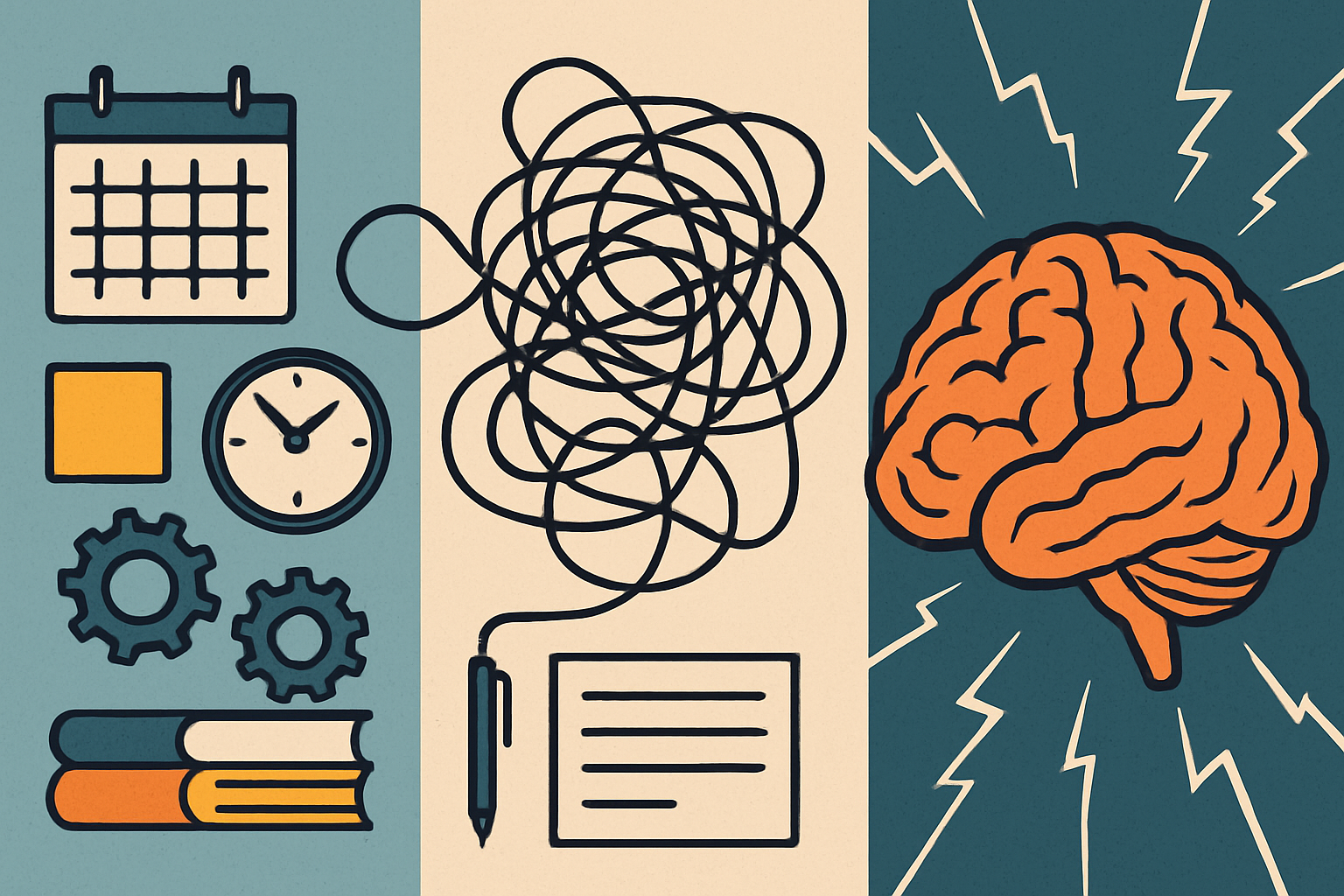
Picture a day when your phone won’t stop buzzing. Group chats are wild. Your notes app is neat. Your feed feels random, but your calendar is strict. You bounce between noise and plan. It turns out real progress lives in that mix. As Crutchfield puts it, neither pure order nor pure randomness is enough for anything truly complex to appear; both play a role in a larger process. And there’s a reason your life needs both: stability helps you store information, while a bit of instability helps you create and communicate new ideas. That trade-off is the heart of nontrivial information processing.
Crutchfield uses language as an everyday example. We speak in a way that’s both useful and informative, yet structured enough to be easily understood. That tension is what lets meanings build on top of each other. So you don’t need to live at an “edge of chaos” to be smart or creative; high capability doesn’t require hovering near chaos at all. Think about texting a friend: a few emojis, a meme, and a clear plan for later. It’s part surprise, part structure. That blend keeps the chat fun and still useful—exactly the balance that makes complex systems work.
Crutchfield also offers a practical way to think about “emergence.” Something really new has emerged when the way you process information changes enough to unlock a new level of ability that wasn’t there before. This isn’t about piling on more observations from the outside; it’s about building the change into the process itself so the new structure has its own internal meaning and use. How do you get there? Through three everyday moves: modeling—making a simple mental picture of what’s going on; computation—using your limited time and memory to predict and act; and innovation—finding a smarter way to organize those same limits. Switching from scattered notes to a tight “one-page” system, or from endless scrolling to a timed-block routine, isn’t just a habit tweak. It’s a new information-processing architecture.
Finally, why does this keep happening in life and in nature? Because our resources are always limited. That pressure nudges us to invent better internal models and climb to the next level of skill. In Crutchfield’s view, this “evolutionary mechanics” is open-ended: we continually move forward by making small innovations that utilize our existing resources more effectively. So if your day feels like a dance between noise and order, that’s not a bug. It’s the engine. Use stable routines to store what matters, let a bit of randomness spark new ideas, and redesign your system when you hit a wall. That’s how complexity—and real progress—emerges.
Reference:
Crutchfield, J. P. (1994). The calculi of emergence: computation, dynamics and induction. Physica D: Nonlinear Phenomena, 75(1–3), 11–54. https://doi.org/10.1016/0167-2789(94)90273-9
Privacy Notice & Disclaimer:
This blog provides simplified educational science content, created with the assistance of both humans and AI. It may omit technical details, is provided “as is,” and does not collect personal data beyond basic anonymous analytics. For full details, please see our Privacy Notice and Disclaimer. Read About This Blog & Attribution Note for AI-Generated Content to know more about this blog project.



